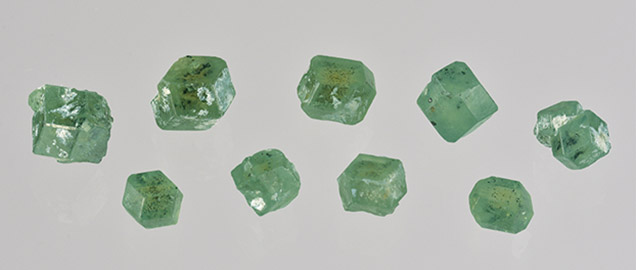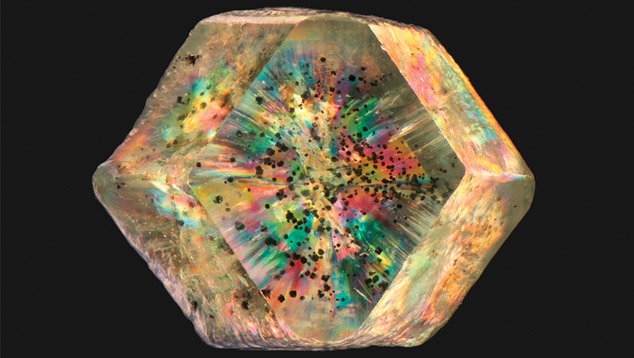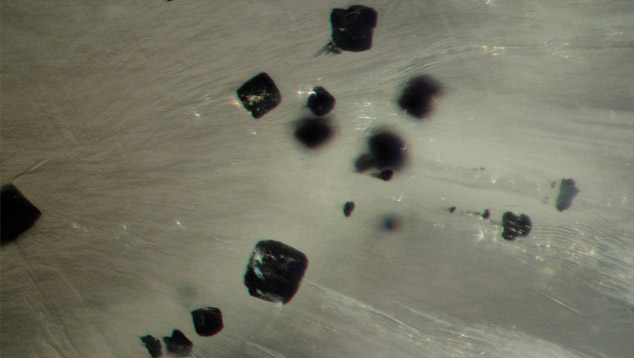Demantoid from Baluchistan Province in Pakistan

Nine demantoids reportedly from a new deposit in the Khuzdar area in Pakistan’s Baluchistan province were recently examined in GIA’s Carlsbad lab (figure 1). The material was bought by one of these contributors (VP) from a gem merchant based in Peshawar, Pakistan.
The nine rough samples described here (1.74–3.73 ct) all exhibited well-developed crystal faces with typical dodecahedral form. Their color ranged from yellowish green to green, with yellow cores in a few samples. Each showed anomalous birefringence, often with a well-defined “octahedral” pattern (figure 2).

Figure 2. This demantoid is viewed through a polished window that is roughly parallel to the (110) crystal face. The sample was photographed with cross-polarized lighting and immersed in methylene iodide to highlight the anomalous birefringence. The sample measures 8.8 mm across. Photomicrograph by Aaron Palke.
Several of the garnets had fibrous (asbestiform) masses of chrysotile adhering to one or more crystal faces, confirming their origin in a serpentinite deposit. Windows were polished into several of these samples for microscopic examination of their internal features. Inclusions of chrysotile fibers (i.e., horsetail inclusions) are concentrated around the rim and radiate out toward the crystal faces (again, see figure 2). The cores of many samples were marked by a field of opaque, equant black inclusions initially presumed to be chromite (figure 3), a commonly observed inclusion in serpentinite-hosted demantoid.
Figure 3. These magnetite and fibrous chrysotile inclusions are typical of the demantoids from this study. Field of view is 2.0 mm. Photomicrograph by Nathan Renfro.
However, laser ablation–inductively coupled plasma–mass spectrometry (LA-ICP-MS) analysis of one of these grains that had breached a polished surface showed Cr below the detection limit (2 ppm Cr). The analysis showed the almost exclusive presence of Fe, with minor Mg and Mn and trace amounts of other elements. This indicates that the opaque black inclusions in these demantoids are actually magnetite. This assignment was further confirmed by Raman analysis on another grain and the attraction of several of the garnets to a handheld magnet. LA-ICP-MS analysis of the host demantoid also revealed very low Cr concentrations from below the detection limit to approximately 10 ppm. This was in stark contrast to the typically Cr-rich serpentinite-hosted demantoid from other deposits. Along with the presence of magnetite instead of chromite, this probably indicated the absence of significant Cr in the ultramafic protolith. While the internal features were very similar to those in other serpentinite-hosted demantoid, the presence of magnetite instead of commonly reported chromite was a surprising feature of this newly described material.



